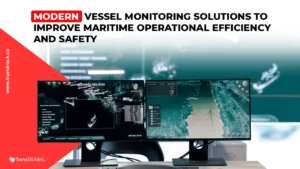Know the Function, Components, and How Electric Power Steering Works!
Posted on November 8, 2023 by Nur Wachda Mihmidati

Electric Power Steering (EPS) is a steering system on a motorized vehicle that uses an electric motor to assist the driver in moving the steering wheel. This system serves to reduce the effort required for the driver to turn the steering wheel, especially during parking or low-speed maneuvers.
Unlike a traditional hydraulic power steering system that uses a hydraulic pump to provide assistance, EPS uses an electric motor connected to the steering wheel. The system can regulate the extent of assistance provided, depending on vehicle speed, steering wheel position, and road conditions.
The advantages of Electric Power Steering include better energy efficiency as the motor only works when needed, as well as greater flexibility in controlling and adjusting the level of assistance based on driving conditions. EPS also allows integration with other electronic-based vehicle systems, such as stability control and braking systems.
Today, many modern vehicles have switched to Electric Power Steering as a replacement for traditional hydraulic power steering systems due to these advantages. Check out the full explanation through the following article TransTRACK!
Electric Power Steering Function
The Electric Power Steering (EPS) function in a vehicle involves the use of an electric motor to provide assistance to the driver in moving the steering wheel. Here are some of the main functions of EPS:
Steering Assistance
EPS provides assistance to the driver by using an electric motor to help move the steering wheel. This makes the vehicle easier to steer, especially at low speeds and when parking.
Assist Variability
The EPS system can adjust the level of assistance provided depending on various factors, such as vehicle speed, steering wheel position and road conditions. At high speeds, assistance can be reduced to provide better control.
Energy Efficient
EPS is more energy efficient compared to traditional hydraulic power steering systems. The electric motor only works when needed, as opposed to a hydraulic pump that keeps turning as long as the vehicle’s engine is running.
Electronic Integration
The EPS can be integrated with other electronic systems on the vehicle, such as the stability control system and braking system. This allows for better coordination between different aspects of the vehicle to improve safety and performance.
Ease of Repair and Maintenance
Compared to hydraulic power steering systems, EPS is often easier to maintain and requires less maintenance. There is no hydraulic fluid that needs to be replaced periodically, making vehicle maintenance easier.
Responsive to Road Conditions
The EPS can respond quickly to changing road conditions. This helps in improving driving comfort and gives the driver better control over the vehicle.
Fuel Saving
Due to better energy efficiency, EPS can contribute to fuel economy, especially at high speeds where steering assistance can be reduced.
These functions make EPS a popular choice in the modern automotive industry, with many new vehicles adopting this technology to improve performance and efficiency.
Electric Power Steering Components
The Electric Power Steering (EPS) system consists of several key components that work together to provide steering assistance. Here are some of the key components of the EPS:
Electric Motor
The electric motor is the main component in an EPS that provides assistance to the steering wheel. The motor is controlled by an electronic control unit to generate a force that assists the driver in turning the steering wheel.
Steering Position Sensor
- This sensor detects the position of the steering wheel and provides information to the EPS control unit. This information is used to adjust the level of assistance provided by the electric motor.
Vehicle Speed Sensor
The vehicle speed sensor provides information about the vehicle speed to the EPS system. This allows the system to adjust the level of assistance according to speed, with typically greater assistance provided at low speeds.
Electronic Control Unit (ECU)
The ECU is the brain of the EPS system. It receives information from the steering position sensor and vehicle speed sensor, then sends signals to the electric motor to set the level of assistance required.
Rack and Pinion or Electric Gearbox
The steering gear system of an EPS may utilize a rack and pinion or an electric gearbox. These components allow the conversion of rotational motion from the electric motor into linear motion that can turn the steering wheel.
Wiring and Connectors
Wires and connectors form the communication path between all components. This wiring connects the sensor, motor, and control unit, ensuring that all information can be exchanged correctly.
Torque Sensor
The torque sensor detects the amount of torque (turning force) applied to the steering wheel by the driver. This information helps the system determine how much assistance is required.
Fuses and Relays
Fuses and relays are used to protect the system from short circuits or excess current. Fuses protect electronic components from damage due to excessive current.
Each of these components works together to create a system that provides steering assistance appropriate to the driving conditions, giving the driver optimal comfort and control.
How Electric Power Steering Works
Electric Power Steering (EPS) involves the interaction between several key components, such as the electric motor, steering position sensor, vehicle speed sensor, electronic control unit (ECU), and other components. Here are the general steps of how EPS works:
Steering Position Detection
- The steering position sensor detects changes in the position of the steering wheel applied by the driver.
- This information is passed on to the electronic control unit (ECU).
Vehicle Speed Detection
- The vehicle speed sensor measures the speed of the vehicle.
- This speed information is also passed on to the ECU.
Torque Detection on the Steering Wheel
- The torque sensor on the steering wheel detects how much torque the driver is applying to the steering wheel.
- This information helps the system determine how much assistance is required.
Data Processing by the ECU
- The ECU receives and processes information from the sensors.
- Based on the data received, the ECU calculates the level of assistance required to help the driver.
Electric Motor Control
- The electric motor is activated by the ECU according to the calculated assistance level.
- The electric motor generates force or torque that is applied to the steering wheel system.
Transmission of Torque to the Steering Wheel
- The force or torque generated by the electric motor is transmitted through the steering wheel mechanism, either using a rack and pinion or an electric gearbox.
- This allows movement of the steering wheel with appropriate assistance.
Adjustment Based on Vehicle Speed
- Based on vehicle speed information, the system can adjust the level of assistance. At low speeds, more assistance is usually provided to improve ease of parking or low maneuvers. At high speeds, assistance may be reduced to give the driver more control.
This whole process happens in a matter of milliseconds and dynamically adapts to driving conditions. Electric Power Steering strikes a fine balance between comfort and responsiveness, making for a more comfortable driving experience and better control for the driver.
With the development of technology in the automotive world, Electric Power Steering (EPS) is a revolutionary step in improving the performance of modern vehicles. The ease of steering, energy efficiency, and responsiveness provided by EPS has changed the paradigm of steering wheel control.
As part of this evolution, it is important to maintain the health and performance of vehicle systems. To facilitate maintenance and monitor vehicle conditions more effectively, we recommend utilizing TransTRACK’s Vehicle Maintenance System. This system provides an integrated solution for vehicle maintenance management, giving users direct access to vital information such as regular maintenance schedules, system health monitoring, and service history.
With TransTRACK, you can ensure that your vehicle remains in optimal condition, improving reliability and optimizing fuel efficiency. Don’t let your vehicle’s performance slide-use TransTRACK’s Vehicle Maintenance System to take smart care of your vehicle.
Keep your vehicle safe, comfortable, and performing optimally – integrate TransTRACK immediately!
Recent Post
Topic :
Recommended Articles

 Bahasa Indonesia
Bahasa Indonesia








